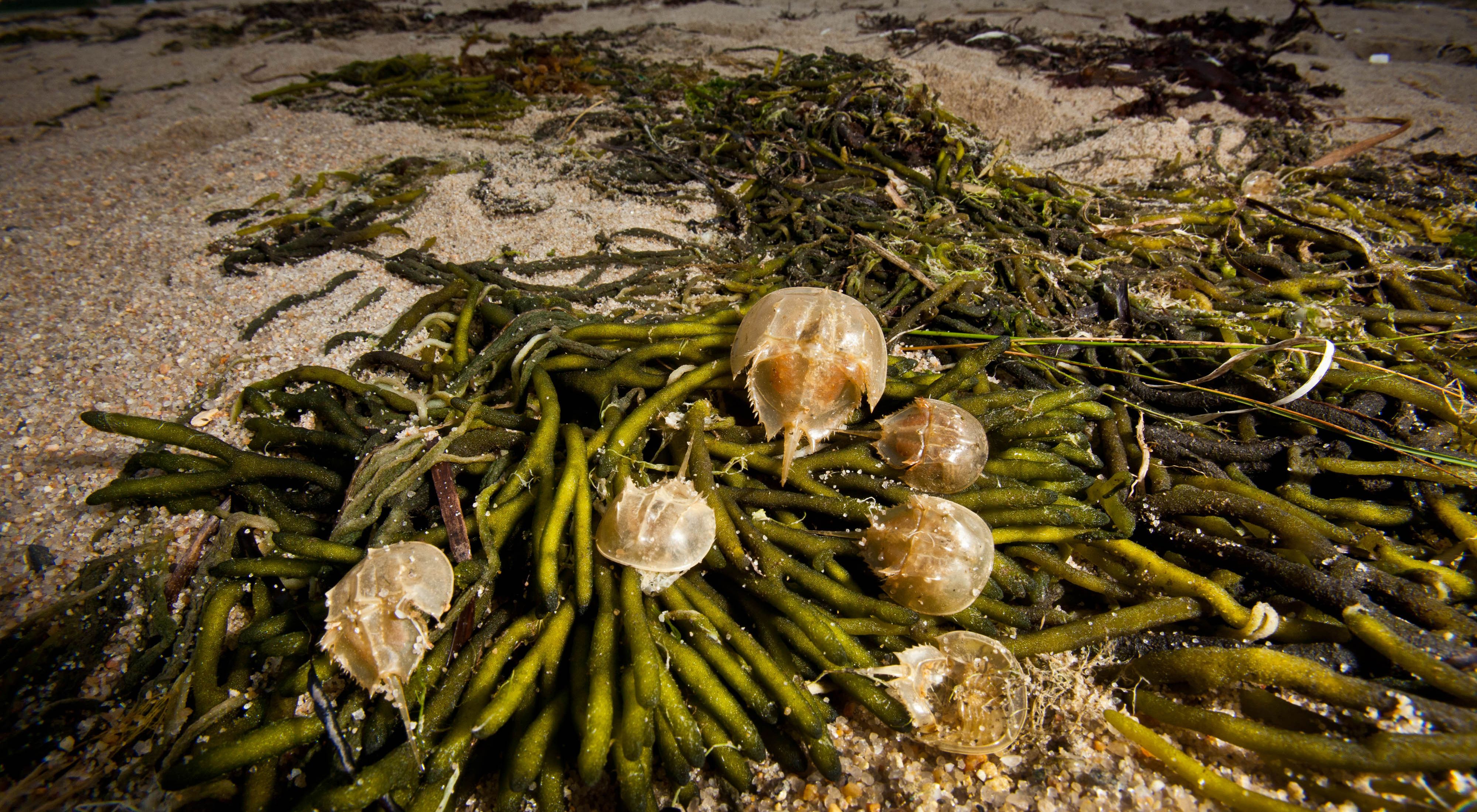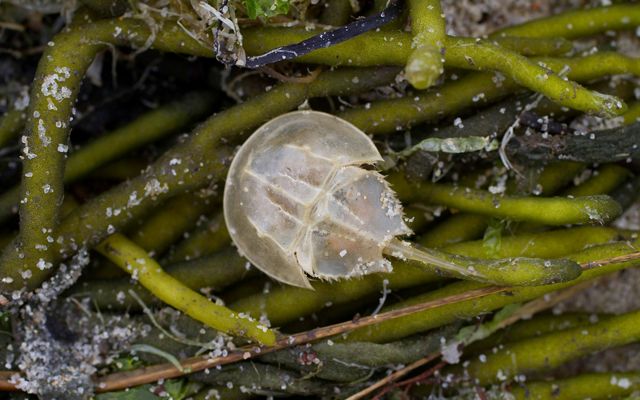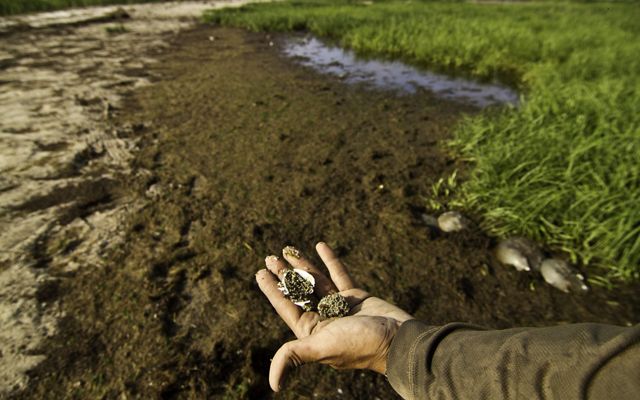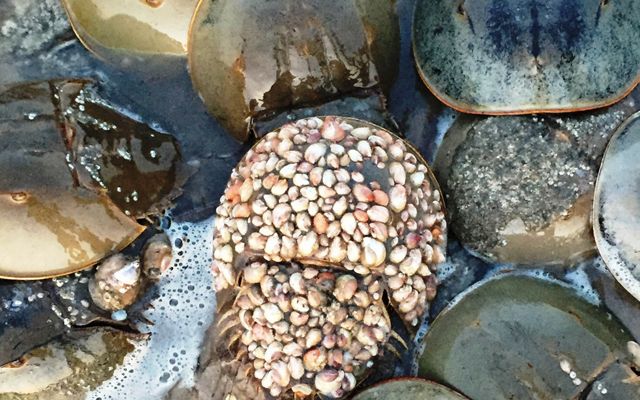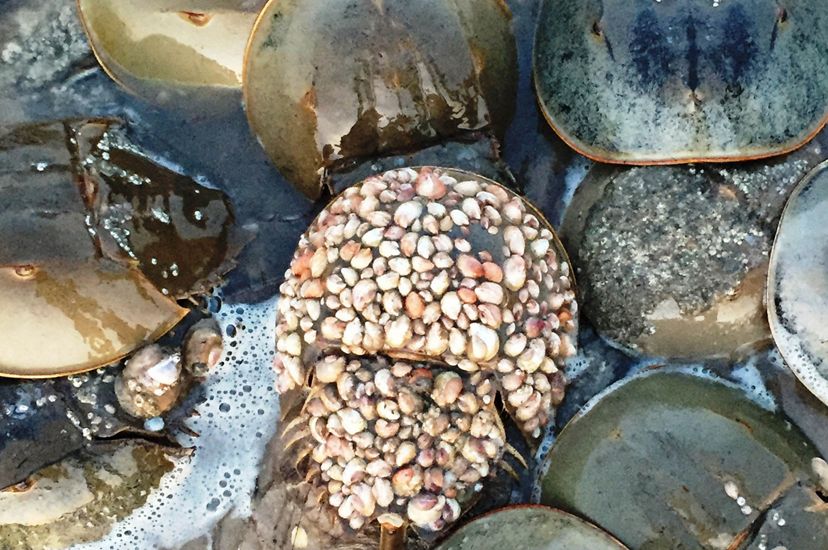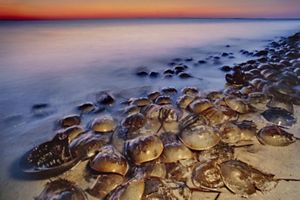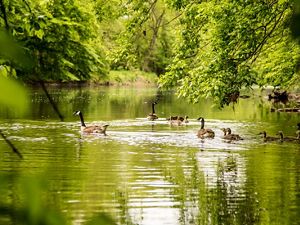Horseshoe Crabs in the Delaware Bay
The annual spawning of horseshoe crabs is an ancient spectacle—and an opportunity to understand and protect the population.
Each spring, the Delaware Bay becomes the site of one of the most spectacular and ancient phenomena in the natural world: the spawning of horseshoe crabs and the flocking of ravenous shorebirds that depend on them.
On moonlit nights in May and June, thousands of the crabs crawl ashore on Delaware Bay beaches at high tide to lay eggs, as they have for 450 million years. The crabs are sometimes so dense that the water’s edge looks like a road paved with brown shells.
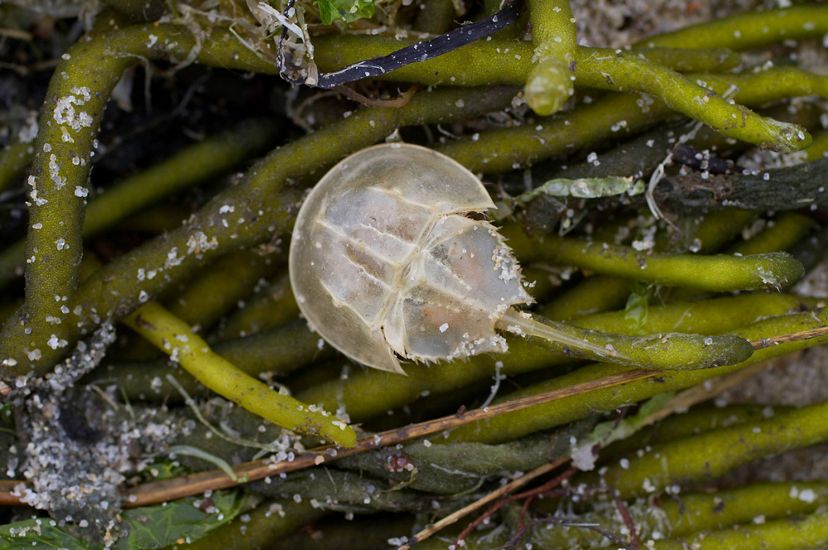
Crabs are Critical for Birds and People
Horseshoe crab eggs are critical in sustaining birds that migrate up to 10,000 miles each year. The threatened red knot, for example, flies from wintering grounds in South America to the Arctic each spring, stopping in Delaware along the way to fuel up on horseshoe crab eggs. Without the food, the red knot cannot complete its journey.
News like this delivered monthly.
Get the latest updates from conservation work near you and around the world.
Send Me EmailsWhile birds like the red knot and ruddy turnstone rely on horseshoe crab eggs for a critical food source, humans also utilize adult horseshoe crabs for two primary purposes. Watermen harvest horseshoe crabs to use as bait for eel and whelks. The crab is also harvested for medical use. Its unique blue blood is used to make a chemical that detects bacterial toxins.
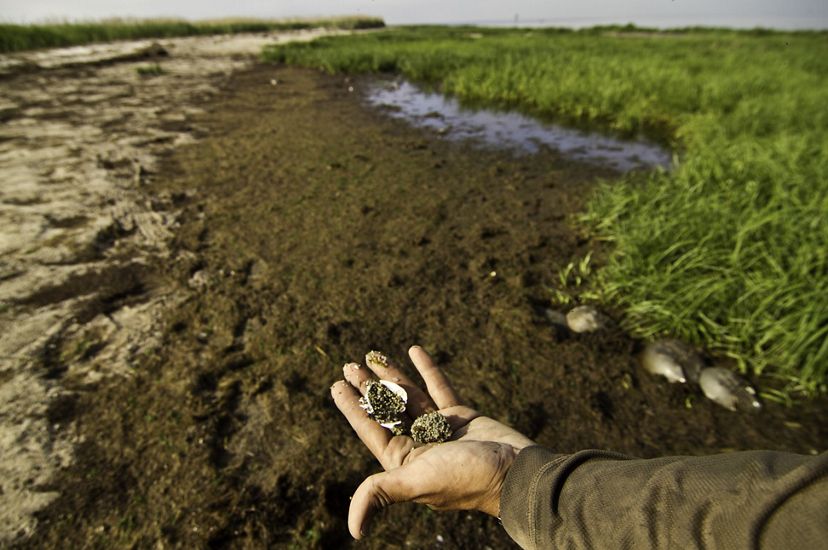
Why Count the Crabs?
Some evidence suggests that the crabs are over-harvested in North America, which has led to a harvesting ban in New Jersey and restrictions in Delaware. Knowing how many horseshoe crabs there are helps fisheries managers develop effective policy for managing populations.
Every May and June, during the evening full and new moon high tides, volunteers count horseshoe crabs at 23 beaches along the shores of the Delaware Bay in both Delaware and New Jersey. This data is used to create the annual Delaware Bay Horseshoe Crab Survey which is utilized by the Atlantic States Marine Fisheries, state agencies and scientists.
In New Jersey, TNC participates in the annual census and reports its findings as part of the collective effort. In Delaware, TNC's Milford Neck Preserve provides nearly a mile of undeveloped beachfront that hosts thousands of spawning crabs and hungry shorebirds.
Stay in Touch
Subscribe to Nature News, our monthly e-newsletter. Get the latest news and updates about our conservation efforts both locally and around the world, delivered straight to your inbox.
